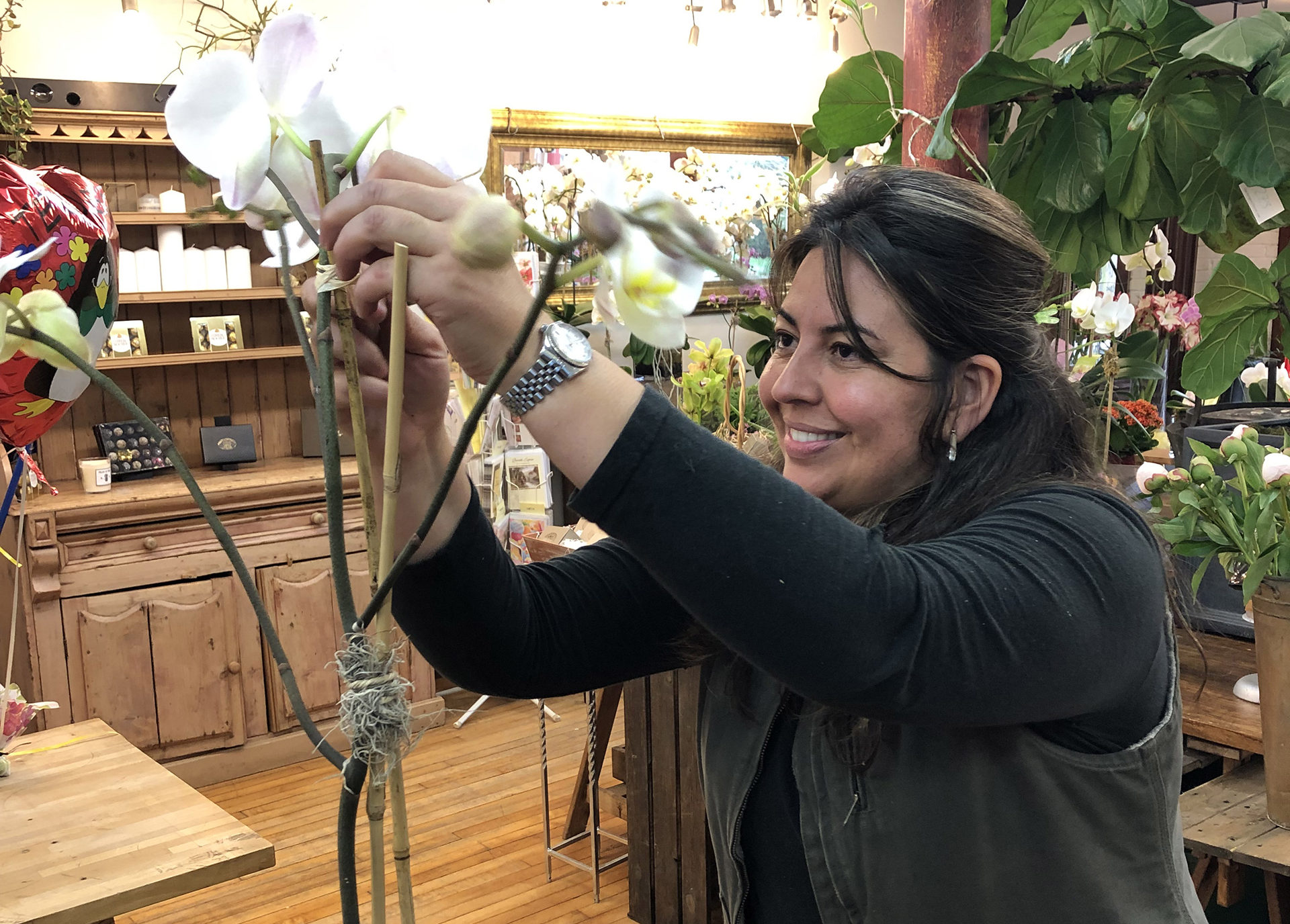The Orchid Whisperers Of East Hampton

They are breathtakingly beautiful, but also very fragile; self-reliant in the wild, but incredibly dependent upon human tender loving care when in captivity.
They are tropical orchids.
“They aren’t meant to be here,” Michael Lucci, half of the 18-year-old business partnership that runs East Hampton Flowers on North Main Street, said about orchids. While they sell many different types of flowers, the beautiful growing orchids visually dominate the shop he runs with Alejandra Lucci. They are not a couple. The Luccis divorced about 12 years ago, but maintained their business partnership. And business, Alejandra Lucci said, is booming.
The duo is akin to being the orchid whisperers of East Hampton.
Most of the tropical orchid plants sold in stores are very young, Lucci said. He called them seedlings. East Hampton Flowers purchases slightly older plants, of the genus Phalaenopsis, with at least a couple of years of growth. Alejandra Lucci said that her business partner handpicks the orchids the store sells from a couple of giant greenhouses on the North Fork. “During the summer, he goes pretty much once a week,” she said.
“They don’t like dry,” Michael Lucci said about the tropical orchids. “The problem is they don’t live in this country (in the wild). They aren’t meant to be here,” he reiterated. Lucci said that orchids are vulnerable to the dryness in many homes caused by heating in winter, or air conditioning during the summer months.
Most wild orchids are epiphytes, meaning that, in their natural setting, they grow on other plants, particularly on the bark of trees. The moisture that sustains them is gathered from the humid tropical air. In the wild, Lucci said, they grow up toward the top of the tree canopy of the rain forest, but never through it, where they would be exposed to direct sunlight, which would quickly lead to their demise.
So, where should you place your orchid? The best room in the house, Michael Lucci said, is the bathroom, because of the humidity, though the bathroom is not the likely destination for most orchids. “The secret is, no drafts. No direct sunlight, except for early morning or late afternoon,” he said. The American Orchid Society’s website recommends placing the plants in eastern or southern facing windows to avoid the hot afternoon sun, protected by a sheer curtain to provide some shade.
Watering is always a concern for orchids. Overwatering the plant can be fatal.
While the Luccis sell their orchids in glass pots, which show off the moss and roots at the base, ultimately, the plants will do best if carefully transplanted into a planter that will allow them to breathe. “We put them in these containers for aesthetic purposes,” Lucci said. “They look great but they are not really happy in these containers.”
Better would be a terra cotta pot with a hole on the bottom, or even a wooden box. Lucci recommends wood chips underneath and around the moss and roots. “It already has moss to retain the moisture,” Lucci explained. “Surround it with wood chips. Put them at the bottom. Wood chips will give it air flow.”
What to do after a stem loses its blossoms? The stem will not re-flower the way it would in an optimal environment. The end of the stem may begin to die. Lucci searches down the stem until he finds a fat node, a baby stem popping out of the main stem. “I find a pregnant little node,” he said. He cuts the stem back above that node, to allow the plant to focus its energy on the emerging baby stem.
As the plant grows new flowering stems, additional staking is needed to support them. Alejandra Lucci demonstrated how to stake growing stems safely. She places the tall bamboo stake toward the edge of the pot, outside the plant’s root area. It is very important not to damage the roots with the stake. After inserting the stake into the medium the roots are being kept in, she gently ties the new stem to the stake, using a light, organic twine.
The American Orchid Society’s website recommends buying the tropical plant from sellers who are “attentive and interested in your welfare,” as well as the welfare of the plant. The orchid whisperers at East Hampton Flowers certainly fit that description.
t.e@indyeastend.com



